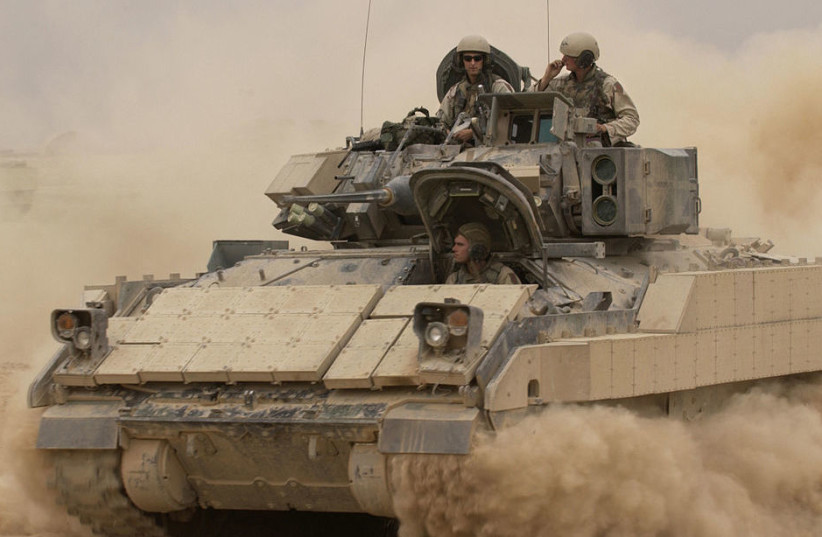Russian television has shown footage of what it says is a US-built Bradley infantry fighting vehicle captured on the front line in Ukraine's Luhansk region after it was immobilized by Russian fire and abandoned by its Ukrainian crew.
The presenter of the prime-time show on the main Channel 1 station suggested that the capture of a working Bradley, one of several dozen that Washington has supplied to Ukraine this year, would enable Russian forces to identify its vulnerabilities.
The news item featured interviews with several unidentified masked members of two recovery crews.
They said they had gone to back to retrieve the vehicle under cover of darkness and thick fog in the "grey zone," about 500 meters (yards) from Ukrainian forces, towing it between minefields after a first attempt to haul it out failed.

Vehicle is seen riddled with bullet holes
The vehicle shown in the footage was riddled with bullet holes, which the presenter said had been left by Ukrainian drones trying to destroy as much of the hi-tech equipment in the abandoned vehicle as possible.
The camera showed stacks of heavy machine gun rounds and yellow-tipped cannon rounds.
One of the recovery team said the vehicle appeared to be an upgraded version of the Bradley with a more powerful engine, improved "dynamic protection" against cannon-fire, and better night-vision and fire guidance systems. He said the vehicle had only around 240 km (150 miles) on the clock.
